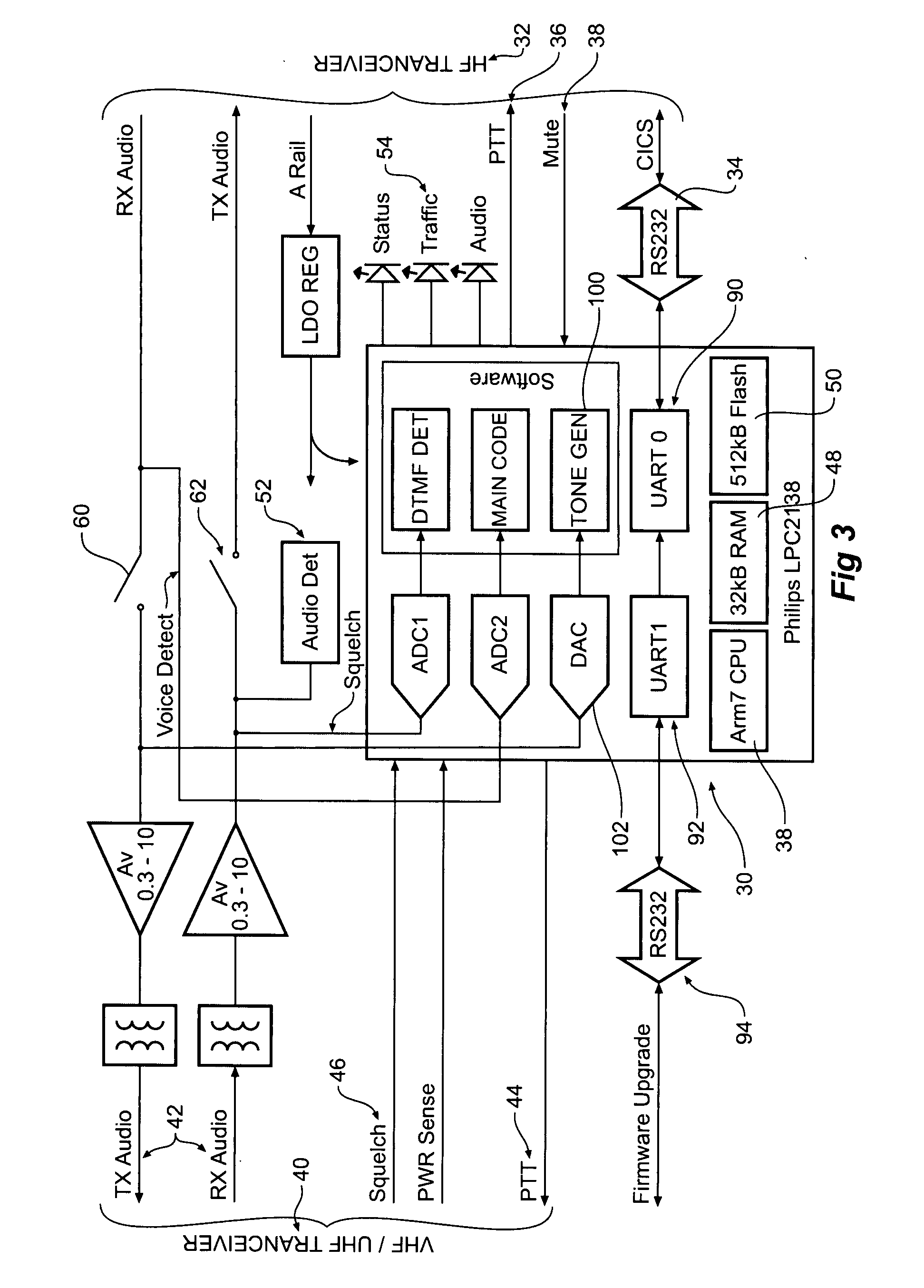Control element for simplex HF to VHF/UHF cross-band system with transmission breakthrough
a control element and cross-band technology, applied in the field of radio communications, can solve the problems of inability inconvenient to have to operate the hf transceiver from the mobile, and insufficient interference signal to swamp the vehicle-mounted hf receiver
- Summary
- Abstract
- Description
- Claims
- Application Information
AI Technical Summary
Problems solved by technology
Method used
Image
Examples
Embodiment Construction
[0038]The invention can be practiced in a variety of ways by performing methods and / or providing means to perform the function of a cross-band system according to the invention.
[0039]In an embodiment of the invention, both an HF transceiver and the VHF or UHF transceiver are vehicle-mounted and are coupled so as to allow signals received by one of them to be transmitted by the other.
[0040]In regards to the embodiment described when the terms VHF or UHF are used, it should be understood that the designated transceiver operates in either of those bands but not both.
[0041]Furthermore, in this embodiment reference is made to different frequency bands namely the HF, VHF and UHF bands and to generalise those bands reference is also made to first and second bands in the context of receivers and transmitters that operate in different bands.
[0042]It should however be understood that the names of the bands (e.g. HF, VHF and UHF) is indicative only and although understood to refer to agreed ra...
PUM
 Login to View More
Login to View More Abstract
Description
Claims
Application Information
 Login to View More
Login to View More - R&D
- Intellectual Property
- Life Sciences
- Materials
- Tech Scout
- Unparalleled Data Quality
- Higher Quality Content
- 60% Fewer Hallucinations
Browse by: Latest US Patents, China's latest patents, Technical Efficacy Thesaurus, Application Domain, Technology Topic, Popular Technical Reports.
© 2025 PatSnap. All rights reserved.Legal|Privacy policy|Modern Slavery Act Transparency Statement|Sitemap|About US| Contact US: help@patsnap.com



